RDL 100 3×3
| November 12, 2016 | Posted by Melinda under Event Report, Ultra Running |
Pssst….have you updated the URL for this site yet? melnewton.com
A focused post-event analysis is one of THE best things you can do to improve your performance over time. It only works if it’s focused (hence the “3 thing” rule), timely, and honest. Time to get into the nitty-gritty of what worked and didn’t. Ready?
The Good
1. Pacing.
I feel so good about this I want to say it again. PACING. Now, I’m perfectly aware this is n=1 and I am in no way saying that I’ve got it all figured out. However, I finished my first-don’t-you-dare-have-a-time-goal-at-your-first-100 and didn’t crash and burn. It was not a slog-fest/death-march nor did it require me to sell my soul at the crossroads to make it happen. The middle third of the race was the best (yes, the marathon I ran in the middle of the night was best part) and yet, I managed to save enough for the last 25 miles that I could savor the finish, never wondered why I was out there, and run across the finish line. Does this mean I’ll crash at burn at my next one? Most definitely :). At least it will make a better blog post story?
I talked a lot about pacing in my previous post so I won’t rehash the details of my pacing plan here 🙂
Running this race helped me come up with a better explanation for people who have a hard time understanding why finishing 100 miles in under 16 min/mile isn’t just a matter of hiking everything at a brisk pace.
Sometimes on trail races you have to go up hills so steep that you are only able to go 1-2 mph. For those of you that are math challenged like me, let’s say that is somewhere in the 30-45 min/mile pace. I’m a pretty good uphill hiker, but on some of the really steep long ones I’m nowhere near 3 mph, let alone 4 mph. This means to average a pace in the 14-15 min/mile range needed to finished in the 24-28 hour range you have to go a LOT faster when you can to offset the slow climbing pace. Even if you only spent 15 or 20 min climbing at a slower pace, it takes more running faster than you would think to get a decent average pace. This doesn’t even take into account the amount of time spent in aid stations. In Rio100 there were around 20 aid stations. Even just a couple of minutes spent in each one can eat into your time and dramatically increase the speed you need to run in order to finish under the cut off. My goal in this race was not to spend more than 2-3 minutes in each aid station. I think as an overall overage this was about on target, meaning I spent about 45 min in aid overall, but it could have been as much as 60 min. On the aid stations with crew I spent longer – especially near of the race, but on the crew-less aid stations, especially early on I spent 30 seconds or less.
2. Crew and pacers.
I had the BEST crew and pacers for this race. I made the decision to provide most of my own nutrition and only use the aid stations as supplemental. I didn’t want to rely on being able to carry food from the aid stations with me to the next aid station and I knew that eating regularly between aid stations was going to be important. This race had an INCREDIBLE number of opportunities for crew to access the runner which made this strategy possible. This competed with the idea of KISS – keep it simple – but I tried to organize my supplies and strip down to the absolutely necessities to make it as simple as possible.
Jack M., the giver of the SLOW THE F- DOWN advice also had this to say: The biggest thing I see with first timers (and also one of the most difficult things to do): LIMIT YOUR GEAR!! You don’t need the blue and green coat along with 3 pairs of shoes, etc! If you only bring one jacket, you won’t spend time wondering if you chose the right one on the course! On top of that, you won’t waste time playing with all the crap you absolutely had to have!! I know that having all that gear is a safety net but walking the wire without a net will really help with your focus and execution!!
I took his advice to heart and really tried to go as simply as possible – the battery headlamp instead of my better rechargeable one. Wearing the same gear for day and night. Using arm warmers instead of a jacket that didn’t need me to take my pack off to get on. ONE pair of back up shoes. A trashbag for “rain gear”. Nothing in my drop boxes beyond food, lube packet.
Here’s my tips for crews and pacers that worked well for me this time around.
- Don’t get too many people involved. Aurora was my crew chief, assisted at times with the pacers who were there waiting for their turn. I then had 3 pacers – Martin, Funder, and Holley. I also had a back up pacer standing by in case murphy’s law happened….which brings me to my next point.
- If there’s something that is REALLY important, then make a back up plan. I knew I REALLY needed pacers for the last stretch. At least for 2 out of the 3 sections. So I had a person who was willing to be on standby just in case something happened. As it worked out one of my pacers (Funder) had to cancel last-minute and it was FINE, without ANY DRAMA. You know what you don’t need when running 100 miles? Drama. (yes, I’m perfectly aware that this violates the KISS principles and safety net that Jack was talking about earlier :). Don’t care!)
- There is nothing that replaces hands on training. Aurora I met the week prior to race and I did a tour through my crew bag and how it was organized, what my running pack looked like, how the water bladder worked and how to fill it, what items went in what pockets, etc. Not only was she ready to go on race day, but she also came up with the GENIUS idea of me bringing a second water bladder so she could fill while waiting and just switch out bladders at aid stations.
- The shoe boxes and bento box continue to work SO WELL as drop bags. I had a drop bag out on the course in the middle of the night on the 30 mile stretch without crew and without any motor skills, in the meager light I had, after running 20+ hours I had NO issues pawing through my supplies and food and getting exactly what I needed.
- I sent my food in drop bags (shoe boxes) to the aid stations even though I had crew there. That way if something held up Aurora and she missed me I still had my essential supplies.
- All-in/all-out policy. At each refueling spot (where I had a drop bag or crew) I took ALL the food out of my pack that remained and put the food into the pack that I had planned for the next section. (I did have some alternative food if something wasn’t working). This made my food more appetizing and I wasn’t as likely to develop food adversion/palate fatigue.
2. Two lights at night
A small handheld and a headlamp. I had extra batteries for both and it was a beautiful system for me.
3. Food timers
Really really useful, even for a runner like me that doesn’t usually have an issue eating during races. When it got dark, late, and I got tired eating and it was a LOT of work to make myself eat. Sometimes I would look at the hours remaining in the race and feel tired not because I had to run all that time but because it meant I had to eat “x” more amount of times LOL.
Interval between the eating alarm was 20-30 min. If I was getting hungry between the beeps (mostly in the beginning) I set it at 20 min. Later in the race 30 min was sufficient as long as I was sipping Perpectuem between times.
3. Layer and clothing
I was never hot or cold. Even though I have a tendency to be cold. Thank goodness I didn’t wear tights. I say this to my future self: Beware the urge to overdress!!!!!!!!!
Now that I have chosen my three;) good things it’s time move onto what didn’t go so well….
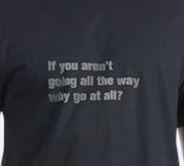
The Bad
1. Chafing

This between the center of my back and my pack. It’s worse where my sports bra sits, but it’s a more generalized problem too. The 2 pics above were taken within minutes of each other – but the lighting shows it slightly different. It bothered me while running but fortunately was more annoying than truly painful.
I’m using this pack.
I don’t know really what to do about this. It’s much worse when I fill up the entire bladder to its capacity – it bulges against my back. So I guess I could fill it partially. Every pack I’ve tried except the Orange mud single quiver which sits much higher does something like this. Maybe I need to try a traditional race vest? Cinch this one down a lot tighter? (I don’t know if that’s even possible). I LOVED the front pockets on this so loathe to give it up. I dunno.
On the other hand my feet were darn near perfect except for one itsy bitty blister on the top of my ankle where I think there was a gap between compression sleeves and my socks.
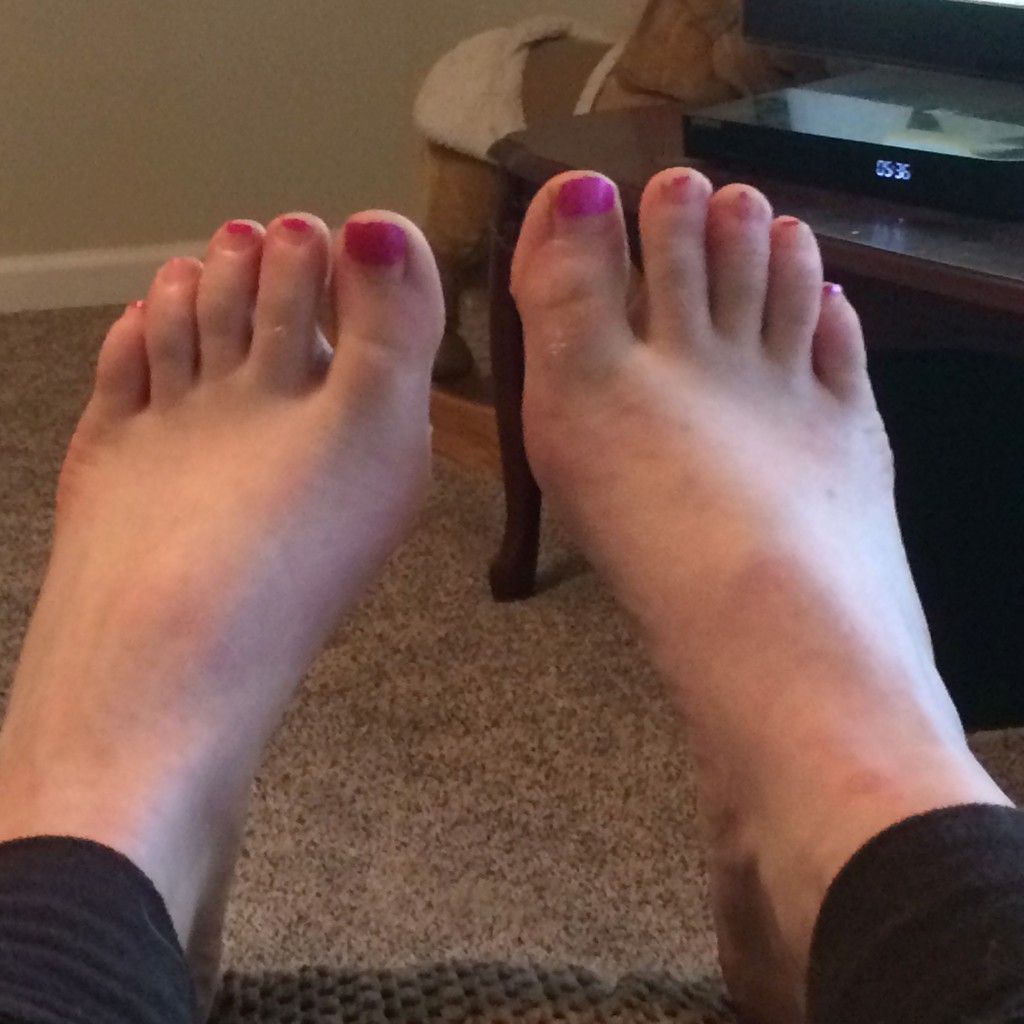
Taken a couple hours after finishing. I think after shower? Slightly swollen but that’s about it.
2. Caffeine
Could have used more caffeine during the night hours?
3. Recovery
DEFINITELY could have the day or two after the race off work. Unfortunately that wasn’t possible this time :(. I got it done but it wasn’t pretty. Then Fig got sick starting Monday night which made any sort of recovery/sleep/self care…….difficult.
The Gear (and food)
Gear
- Random race tech t-shirts – changed at dusk so that I could have a nice dry one
- Spandits Boardie length shorts
- Balagra Enduro socks
- Hoka Challenger ATR 2 for first 75 miles, Hoka Bondi for last 25 miles.
- Calf compression sleeves for last 25 miles
- Orange mud hydration pack with bladder – had an extra bladder and it worked well to switch the bladder out at crew stations instead of trying to fill it.
- Smart wool arm sleeves morning and overnight
- Random knit gloves – used in morning. Didn’t use them overnight
- Forgot the buff so used a smartwool beanie in the morning and over night. Ball cap during day.
- Random Target sports bra
Ready for the food?
The best part of the 100 is getting to eat ALL THE FOOD. At least, until midnight when you decide eating is overrated.
- Applesauce – good all day and night
- Quaker chewy granola bars – good all day and night
- Skippy PB bites – good all day and night
- Hammer perpectuem Cafe Mocha flavor. All day and night, I’m convinced saved my ass!
- Ritz bits with CHEEZ – surprisingly edible both day and night.
- Uncrustables – OK during the day and night. Never fabulous but always edible.
- Mentos – saved for pulling myself out of bonks. Absolute miracles.
- Clif bar mango/banana/coconut – good during the day, OK at night.
- At aid stations: broth, grilled cheese. An occasional banana. Chocolate milk from the crew.
- Complete failures: probar (ate half in morning, threw the rest away), PB packets (couldn’t get them open and then didn’t sound good), clif bars/luna bars/bars of any type.
One last thing
In case it wasn’t apparent just how much I LOVE my crew and pacers let me just say that I will forEVER be grateful for the weekend they gave up to make sure my first 100 mile was a success. They each did such a good job, I cannot imagine doing this without their support and encouragement. :3


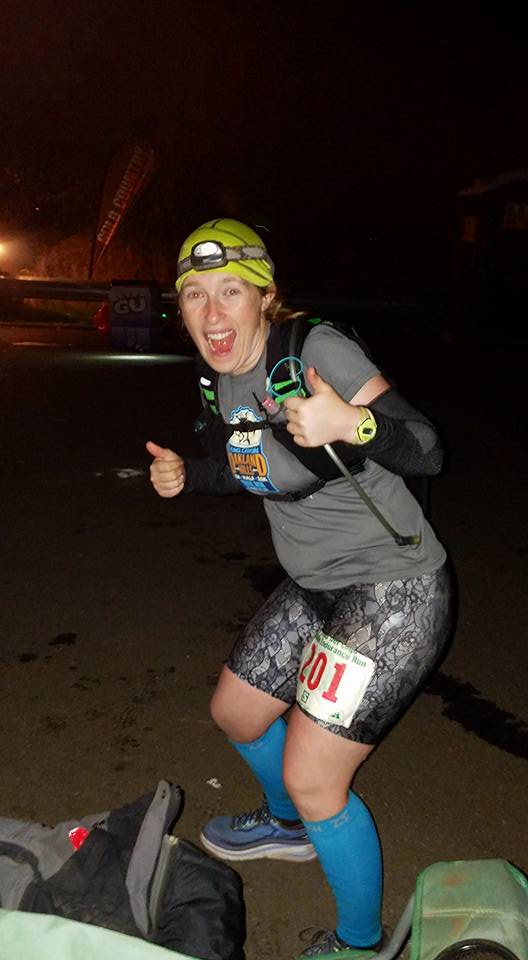

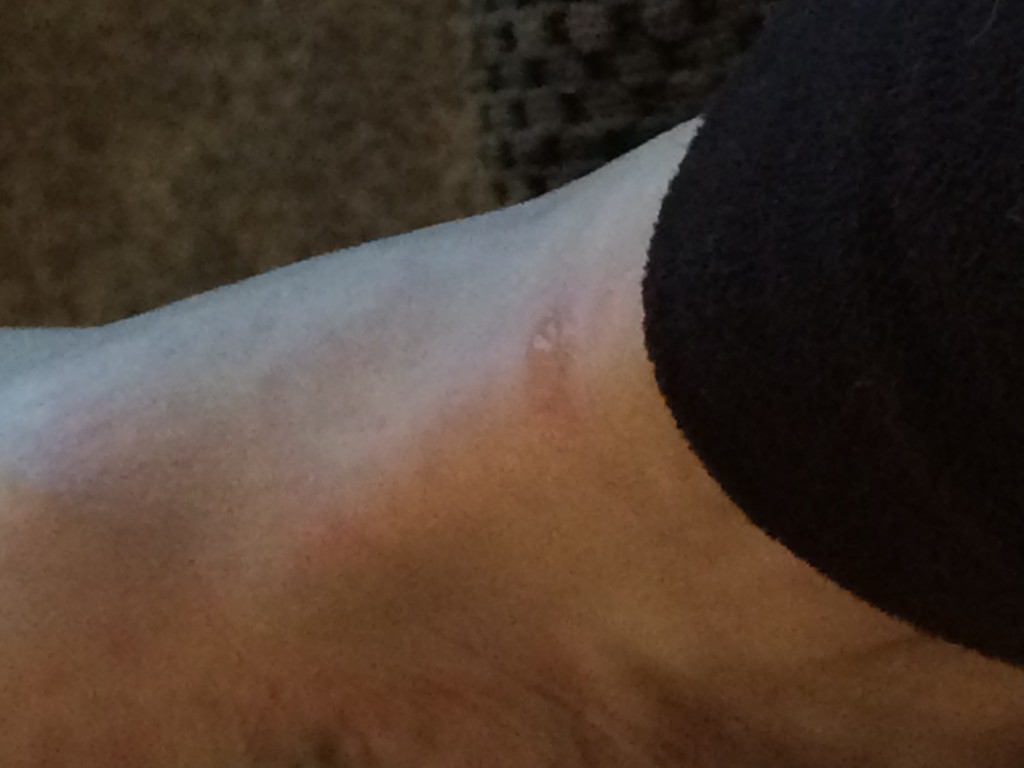
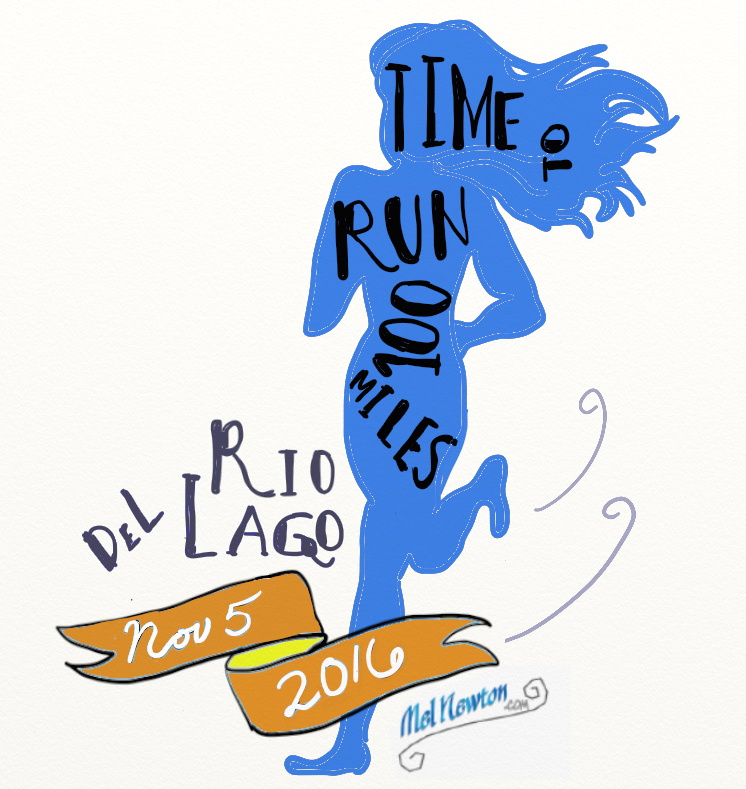











Hey Melinda,
How about training up for the one mile RDL race? What was that like? Four months of one hundred miles logged over a week? Doing runs at night to get the feel of night time running? I know we both ran CTR’s Coastal Trail 50k. Did you use that as part of your training run so maybe one 50k logged on one day per week leading up to RDL? I know that one of my ultra runner friends who has done a bunch of 50k and 50 mile races says that “ignorance is bliss” as running that stage of the game that it’s mostly mental and seeing if one is tough enough to move pass the wall. Your thoughts and input is greatly appreciated. Good luck on the Western States lottery! I hope you earn a spot!
Sorry one hundred mile and not one mile RDL that I typed in that first sentence.
A summary of how I train for 100 mile race is actually a really good question and probably deserves a post rather than a comment :-). I’ll do that for you very soon. In the meantime you can get a feeling of how much training I actually did by looking at the once a month IRL post that I do. All the runs and miles that I did our logged there. I rarely run over 100 miles a month :-). Things that I have in my favor are an exceptional ability to run by feel, probably born out of running prior to having access to GPS or anything else to monitor pace other than my bio feedback, many years of distance running thus a big base (ran my first marathon over ten years ago), and having gone the distance on horseback in a similar time frame and knowing what that took physically and mentally.
L put a post together for you with some answers for you!
Congratulations again to you. Thank you very much for the recap as this helps other runners like me. Now I just have to psyche myself up do just what you just did. A whopping hundred miles…I think I can, I think I can! Any more races on your horizon? Leadville, Tahoe Rim Trail, Western States, etc.?
I’m in the lotto for ws100. As far as what I’ll do if I don’t get in….I would love to do Tahoe 50 (not ready for the 100 I think). I’m not sure what my qualifier would be next year. Maybe quicksilver? Other bucket list races- big horn 100, the OD, ohlone 50k, and something in Oregon :).